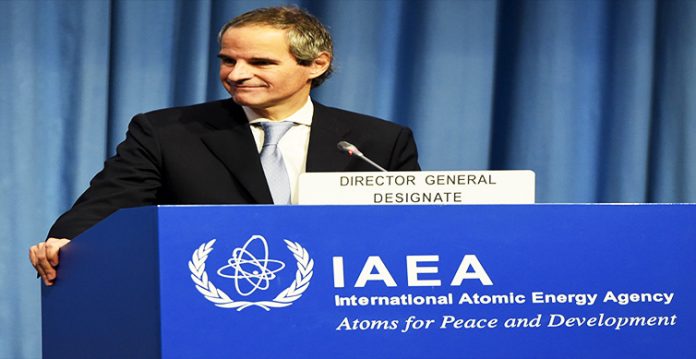Iran has produced more than 2.4 kg of nearly weapons-grade uranium, according to the International Atomic Energy Agency (IAEA), putting it well outside the bounds of an international nuclear deal it is allegedly working to salvage.
The move to enrich uranium to a purity level of nearly 60 per cent has happened since April, said IAEA chief Rafael Grossi, who has for weeks been signalling that he is worried about the direction of Iran’s nuclear programme, dpa news agency reported.
The news could complicate talks about Iran’s nuclear path. The country signed the landmark 2015 nuclear deal with the US and other countries limiting its nuclear stockpiles in exchange for lifting sanctions.
ALSO READ: UN Security Council urges cessation of Israel-Palestine violence
However, after former US President Donald Trump pulled out of the deal in 2018, Iran began ignoring various aspects of the agreement as well.
Although talks are ongoing to restore a version of the deal with the new US administration, Iran continues to be seen as seeking ways to stymie oversight of its nuclear programme.
IAEA inspectors have seen their access limited while enrichment programmes have gone apace.
According to the 2015 deal, Iran is only allowed to enrich uranium to a level of 4 per cent, which is what is needed to fuel atomic reactors.
Nuclear weapons require uranium enriched to a level of 90 per cent.
However, once uranium has been taken to 60 per cent, it is possible to enrich it to a higher level very quickly.
“Sixty per cent is almost weapons-grade,” Grossi told the Financial Times on Monday.
Tehran argues it needs the more highly enriched uranium for medical purposes.
According to the IAEA, Iran possesses about 3,200 kg of uranium enriched to various levels, about 16 times more than allowed by the 2015 deal.
ALSO READ: US Secretary in Israel for talks to support ceasefire
The report also categorized the restrictions IAEA inspectors face, from limitations in inspections to being banned from observing the construction of centrifuges.
In a separate report, Grossi also said on Monday that he is “deeply concerned that nuclear material has been present at the three undeclared locations in Iran and that the current locations of this nuclear material are not known by the agency”.
SOURCE-IANS







